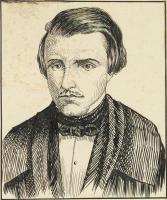Symbolism: what is it, characteristics and representatives of the movement
The symbolism It is an artistic and literary movement that originated in France from the second half of the 19th century. At first it appears in literature, however, it soon spreads to other arts such as painting or theater.
In this trend, artists from different disciplines find in art a form of expression through the subtle use of symbolized language.
Symbolism revives some romantic values and, at the same time, disagrees in the use of art as a representation of the everyday world, as if it is made by currents such as naturalism or impressionism.
Let us know, next, the features and the main managers of this artistic movement.
Context
The symbolism emerged at the end of the 19th century, coinciding with a time of decadence and discontent in which many intellectuals began to question positivism.
Faced with this, artists, especially those from the literary environment, oppose the tradition and customs relative to the bourgeoisie. In this way, the artist closest to the bohemian way of life appears, to conceive art in a free way, leaving the established norms behind.
It was the poet Jean Moréas who, in 1885, raised this new style in an article stating that poetry had to be sought "not so much in its decadent tone as in its symbolic character." From that moment on, magazines began to appear that support this new way of making poetry.
Symbolism in literature
Symbolism is a literary movement that finds in poetry a perfect path to discover, through symbols, a hidden reality.
Characteristics
Among the particularities of symbolism in literature include:
- Break with the forms of realism and naturalism
- Renewal of the poetic form and freedom of creation in the face of the rigid established norms
- Musical language: all poetry evokes music, musicality prevails over the literalness of language.
- Subjectivism and individualism
- Evocation of impressions, suggestion and allusion in the face of precise interpretations of reality
- Mystery and mysticism
- Use of poetic language as a cognitive element
- Use of rhetorical figures, such as metaphor or synesthesia, to awaken sensations
Representatives
Charles Baudelaire (1821-1867)
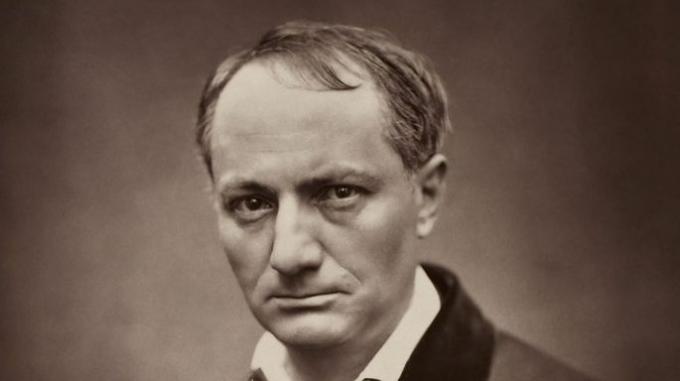
Baudelaire was the forerunner of French symbolism. He was a great enthusiast and follower of the work of Edgar Alan Poe, he dedicated 17 years of his life to translating it. Although his origins were in the bosom of a wealthy family, in general, he had a rather precarious life.
In his work he delves into the evils of society and man, as well as the permanent conflict of the latter between good and evil. During his years in Paris, the author wrote the collection of poems The flowers of Evil, with which he was fined for "outrage to public morals." This is a example of the production of it:
Tonight the moon dreams more lazily,
As if it were a beauty sunk between cushions
That caresses with a discreet and very light hand,
Before falling asleep, the contour of the breast (….).
Stéphane Mallarmé (1842-1898)
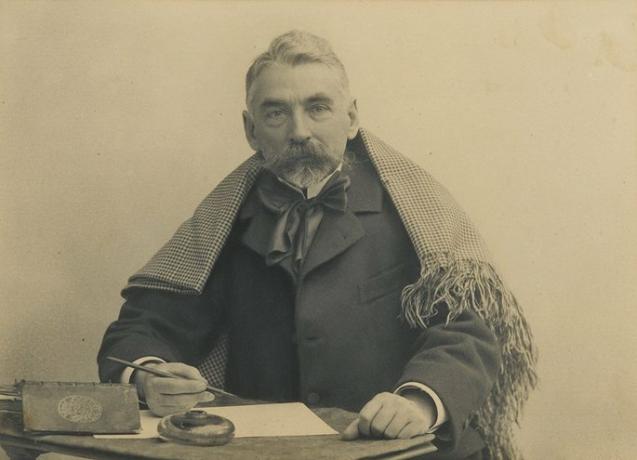
Stéphane Mallarmé was born in Paris into a family of civil servants. His work is scarce but it influenced France at the end of the 19th century. His poetry is dark and complex, often seeking perfection and beauty. The influence that authors such as Baudelaire and Banville had on him is particularly noteworthy.
One of his most significant creations was The siesta of a faun (1876), which moves between reality and the dream world. What example of his poetry, let's see this fragment of his poem Appearance:
The moon was saddened. Seraphim crying
they dream, the bow in the fingers, in the calm of the flowers
vaporous, they drew from languid violas
white sobs sliding down the blue of the corollas (...)
Arthur Rimbaud (1854-1891)
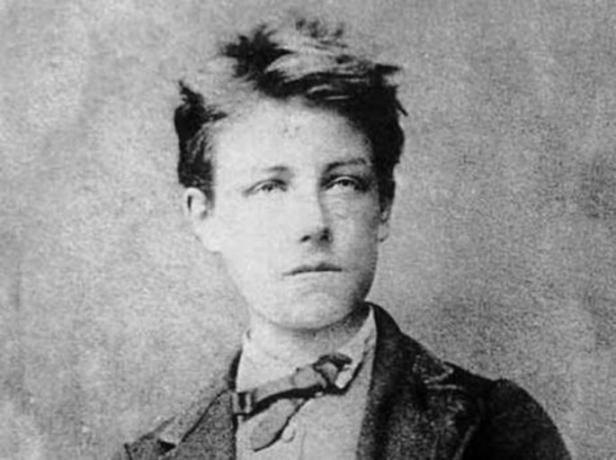
He was born in Charleville into a family of the petty bourgeoisie. Also known as the forerunner of surrealism, this author, from a very young age, led a radical bohemian life, which is why his literary dedication was only part of the first years of his life.
Charleville recognized that the poet was like a "seer", a kind of enlightened whose mission is to make understand "the other vision of reality." With his work he approached Baudelaire and Mallarmé.
Among his works stand out A season in hell (1873) e Illuminations (1874). Sensation is an example of his poems:
In the summer afternoons, I will go on the trails,
wounded by the wheat, to tread the meadows.
Dreamer, I will feel the freshness on my feet
and the wind will bathe my naked head.I will not say a word or think of anything.
But immense love will climb up to my soul
and I will go far, far, the same as the bohemian
happy, for those worlds, as with a loved one.
Paul Verlaine (1844-1896)
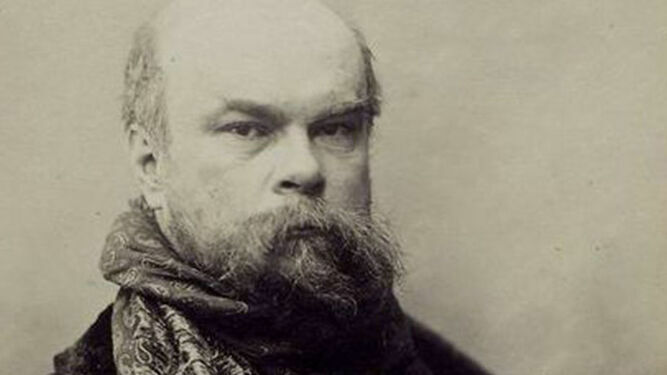
He was another French poet relating to the Symbolist movement. Verlaine belonged to the petty bourgeoisie. At the age of 20 he gave himself completely to the bohemian life. His work was influenced by Baudelaire and especially Rimbaud.
The use of colloquial language that seeks musicality is common in his poetry, he also makes use of metaphors and symbols. Often, he is considered by some critics as the father of modernism, at least his influence is significant for some authors relating to this movement.
Among his creations stand out Saturnian poems (1866) and Gallant parties (1869). Here a poem fragment called My dream:
I dream often the simple and penetrating dream
of an unknown death that I adore and that adores me,
that, being the same, she is always different every hour
and that the traces follow from my wandering existence (...).
Symbolism in painting
Although Symbolism began in literature, it also extends into the plastic arts, as is the case with painting. That he also finds his reason for being in the rejection of positivism and materialism, as well as in the decline of the bourgeoisie.
Likewise, the Symbolist painters oppose the imposition of the Impressionists, who forced the observation of nature and its changes. This makes the Symbolists frequently resort to literature in their creations.
Characteristics
- Tendency to expression through shape and color
- Representation of an alternative reality, relative to the dream and spiritual world, through symbols
- Escape from the present
- References to mythology, religion, and the supernatural
- Suggestion versus imitation of reality
- Eroticism
- Subjectivism and anti-racism
Symbolist painters
Puvis de Chavannes (1824-1828)
French painter associated with pictorial symbolism. One of the most relevant aspects of Chavannes's painting is the dispersion of the figures and the scarcity of color. Likewise, its theme is inspired by mythology, literature or the dream world.
For him a work of art arose "from a kind of confused emotion within which it is contained." Among his most emblematic creations stands out The poor fisherman, painting of great influence for authors like Picasso.
The poor fisherman
Homelessness or resignation are represented in this work through a widowed father with his two children in a cold and helpless environment.
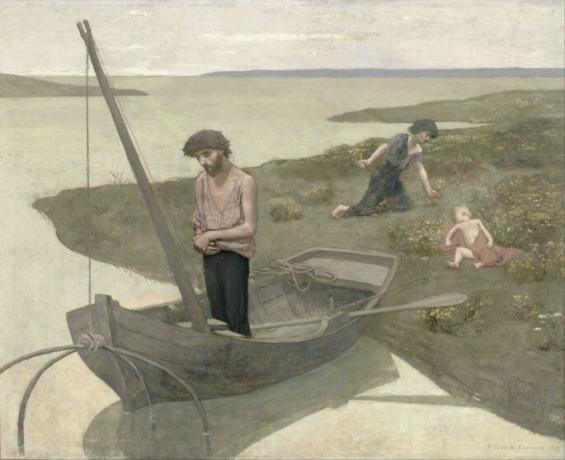
Gustave Moreau (1826-1898)
It is a forerunner of Symbolism. His works stand out for containing disturbing atmospheres and decadent aesthetics. Likewise, the use of thick textures and religious or mythological-inspired themes is relevant. Also, it was of great influence for avant-garde Surrealist and Fauvist authors. Among his creations stand out works such as, for example:
Appearance
Symbolist painting of religious references, a very present theme in the author's paintings. In it a motif of Salome is represented in front of Herod Atipas and the head of Juan Bautista.
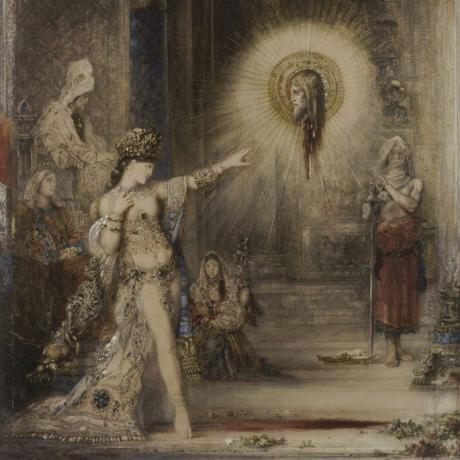
Odilon Redon (1840-1916)
Considered the forerunner of surrealism, in his works the mythological, biblical or literary theme emerges wrapped in fantasy and mystery. During his early years he rejected color and worked in black and white. He especially made charcoal drawings and lithographs. Later, he began to use color using watercolor and oil. Among his works we can highlight:
Eyes closed
It is a portrait of Camille Falte, the painter's wife. Through a face with closed eyes, some themes present in the author's creation can be sensed, such as "the inner world, sleep or absence".


